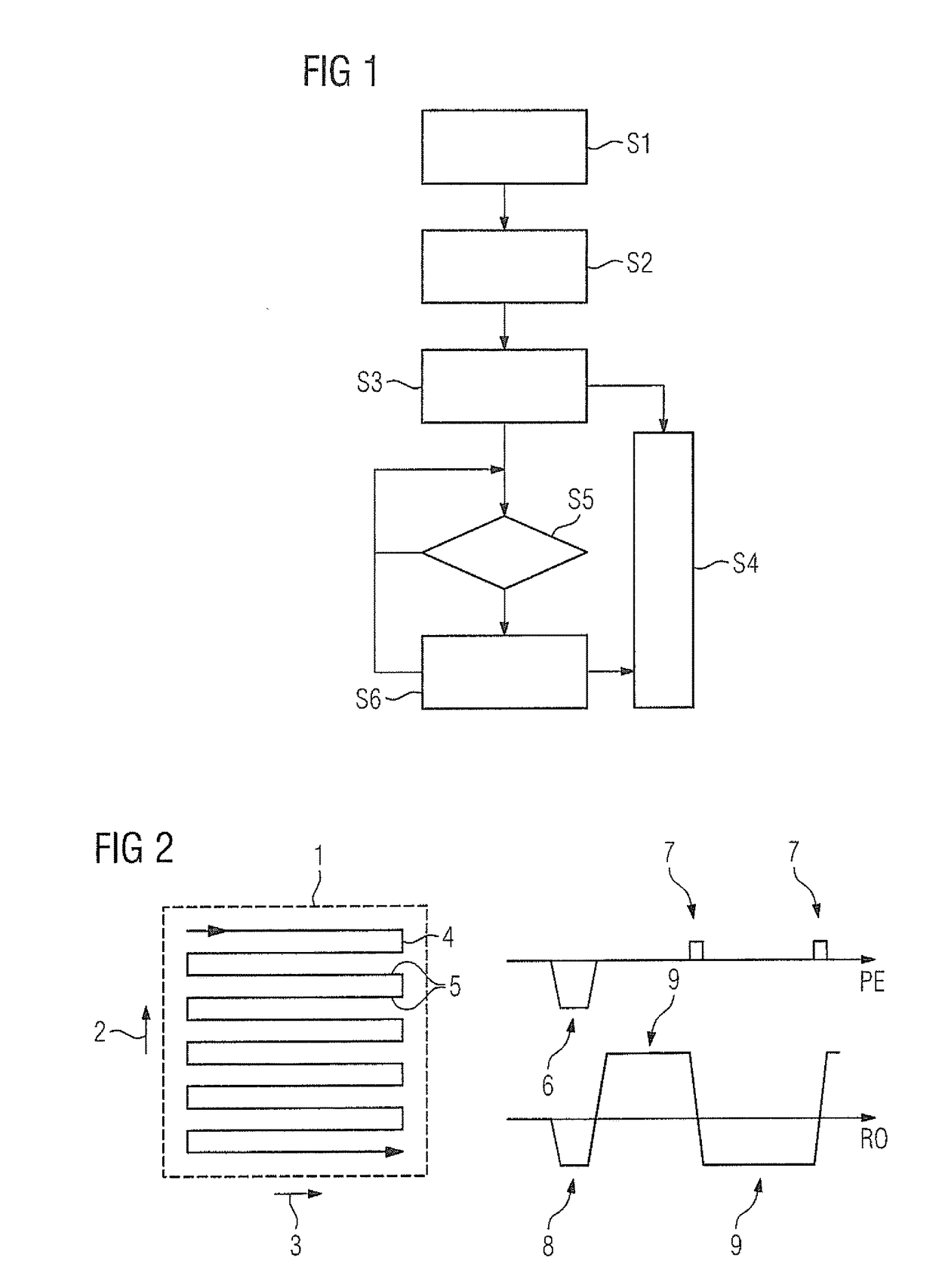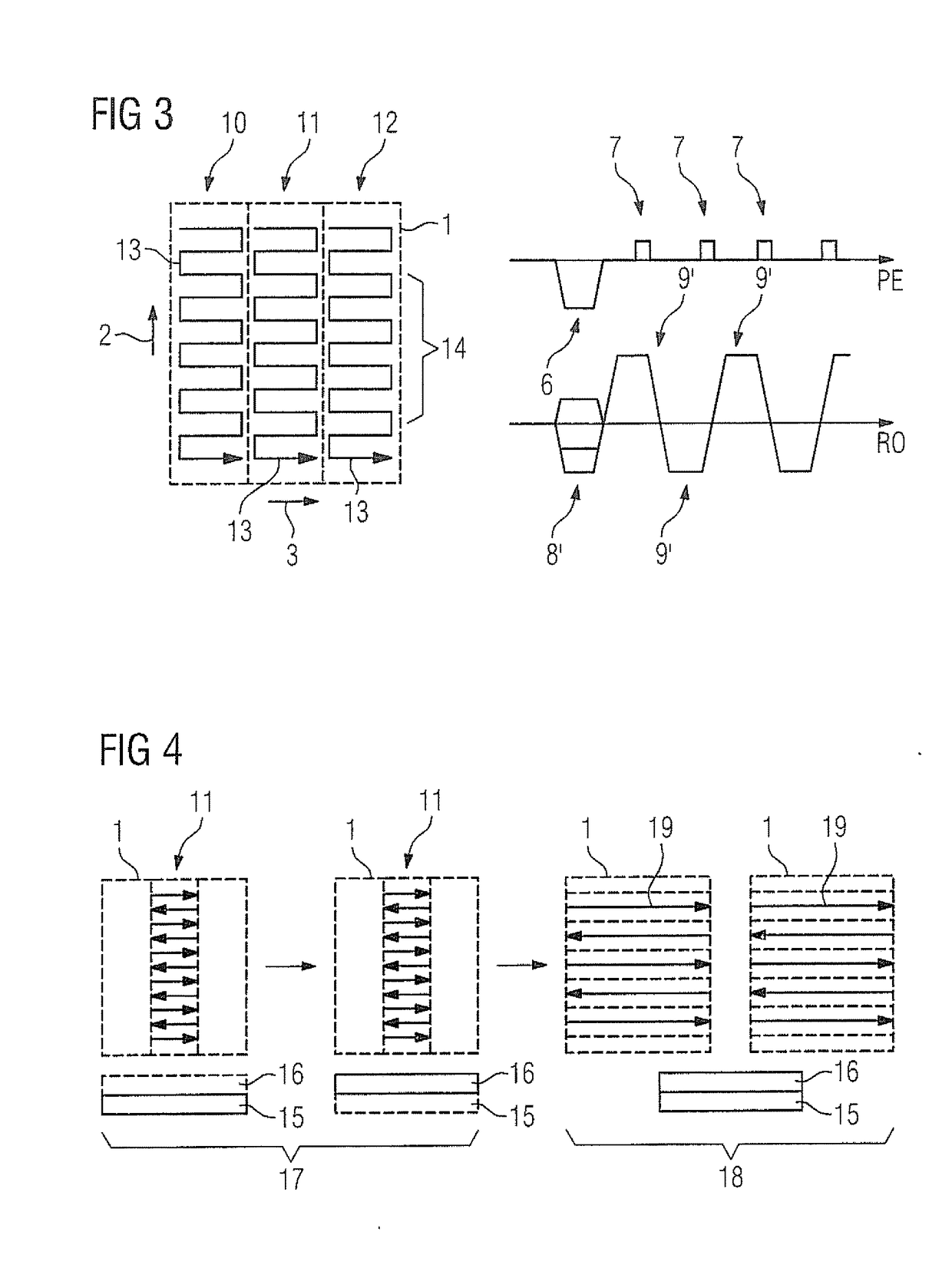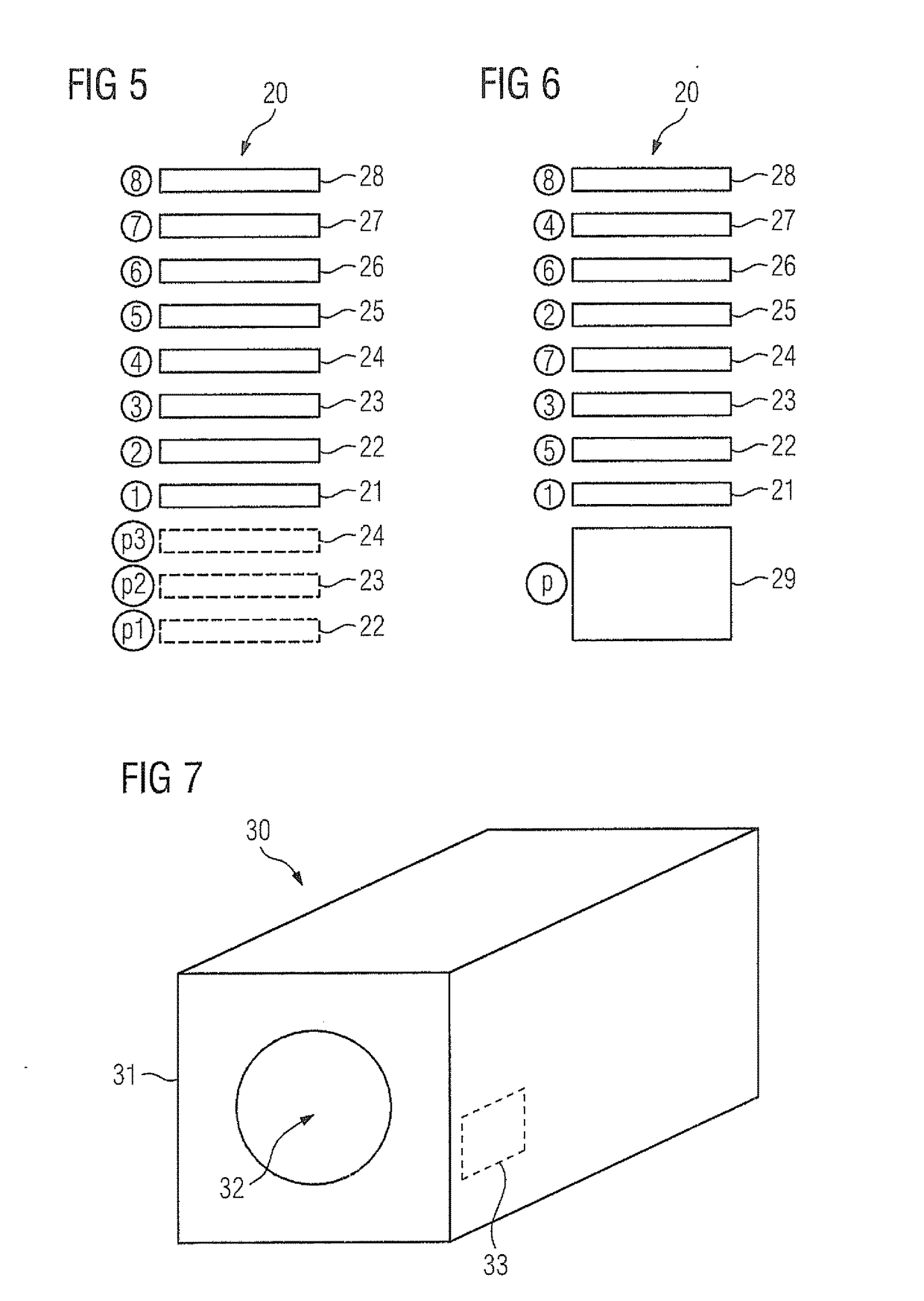Method and apparatus for recording calibration data for a grappa magnetic resonance imaging algorithm
a magnetic resonance imaging and calibration data technology, applied in the field of methods and apparatus for recording calibration data for grappa magnetic resonance imaging algorithm, can solve the problems of patient movement, two significant hurdles, and the usual time-consuming of magnetic resonance recording, and achieve the effect of reducing the recording time for calibration data
- Summary
- Abstract
- Description
- Claims
- Application Information
AI Technical Summary
Benefits of technology
Problems solved by technology
Method used
Image
Examples
Embodiment Construction
[0033]FIG. 1 explains a general exemplary embodiment of the inventive method. The inventive method serves to record calibration data, from which convolution kernels for the later use of an inplane GRAPPA algorithm and a slice GRAPPA algorithm are to be calculated. The convolution kernels are then used in order to derive magnetic resonance data from measurement data of a patient. The measurement data is recorded in this case in echo planar imaging, wherein a number of slices are recorded simultaneously (Simultaneous Multislice SMS). A recording region of the patient is recorded; diffusion imaging can be involved for example.
[0034]The calibration data are recorded in a reference scan preceding the measurement of the diagnostic measurement data and, if possible, this is to be done so that the scans are influenced as little as possible by movements in the recording region, so physiological processes have as little influence as possible, and the phase encoding bandwidth matches that used...
PUM
 Login to View More
Login to View More Abstract
Description
Claims
Application Information
 Login to View More
Login to View More - R&D
- Intellectual Property
- Life Sciences
- Materials
- Tech Scout
- Unparalleled Data Quality
- Higher Quality Content
- 60% Fewer Hallucinations
Browse by: Latest US Patents, China's latest patents, Technical Efficacy Thesaurus, Application Domain, Technology Topic, Popular Technical Reports.
© 2025 PatSnap. All rights reserved.Legal|Privacy policy|Modern Slavery Act Transparency Statement|Sitemap|About US| Contact US: help@patsnap.com



